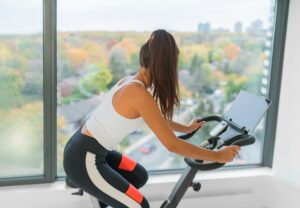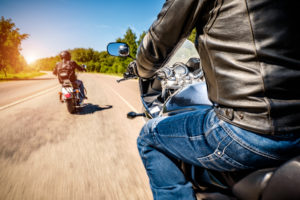In today’s fitness-centered world, bicycling has become a popular mode of travel and keeping fit. More and more Americans are relying on two-wheeled transportation to get them to and from work, as well as replacing gym memberships for many avid cyclists. Cycling brings with it risks of injury that may be different than those in standard automobiles, but certainly no less serious. In fact, many people believe that by riding a bicycle, as opposed to operating a car, only poses risk to themselves and not others. This is why safety in riding is so important.
In 2013, a number of bicycle lanes were added to the streets in Omaha and Bellevue. A bicycle lane is a narrow separate lane designated with a symbol of a bicycle. As bicycling became more popular, so did the risk of injuries to bicyclists on our metropolitan streets. Designated bicycle lanes serve to prevent automobile-bicycle accidents and save costs and health treatment necessitated by automobile/bicycle accidents. They provide a smooth, continuous path on which to ride safely. Only 1 percent of the United States uses bicycles as a mode of transportation for commuting to and from work, while 25% of the Netherlands uses bicycles as a mode of commuting. The rate of automobile-on-bicycle accidents in the Netherlands is about 26 times lower than the United States. The Netherlands comprises a much smaller geographical area, however contains over 18,000 miles of segregated bicycle lanes.
Bicycle lanes encourage more cycling and less driving, which equates to less traffic, less pollution, more exercise, more safely and a cheaper means of transportation. However, not everyone is a fan of bicycle lanes. In New York, protestors argue that the lanes take away from their rights as motor vehicle operators by forcing them to share the road. There is also an argument that curbside parking is reduced and some bicycle lanes run through loading zones originally designated for deliveries.
In Bellevue, Nebraska, the addition of bicycle lanes eliminated a lane of traffic each way from Chandler Road on the North to Capehart Road just past Offutt Air Base on Fort Crook Road, the main drag between Bellevue and Plattsmouth. The wide bike lanes have made bicycle travel safer but cyclists still need to watch out for traffic, stop at stoplights and be aware of traffic around them at intersections. Bicyclists always have the right of way.
Similarly, Omaha has expanded bike lanes on Leavenworth Street between 13th and 31st Street, making downtown bicycle travel safer. The addition of bicycle lanes connects Bellevue to Omaha and offers more opportunities for cyclists to commute. Omaha Mayor Jean Stothert believes these bicycle lanes also help businesses encouraging healthy choices of their employees by allowing a safe lane in which to travel. Bicycling, however, still carries with it hazards when commuting. Lack of a helmet increases your risk of serious injury and traumatic brain injuries.
When you are traveling on the main roads, it is a good idea to avoid wearing earphones and concentrate on the sounds of the road. Being observant as a cyclist can reduce your risk of injury. Be sure to use your hand signals when making turns or stopping and remember to wear reflective gear. Pay attention to traffic control measures and travel at safe speeds for the conditions you are experiencing. Know the bicycle routes that provide the most visibility and always make sure your bicycle has working equipment and can be easily seen at night. It is also important to inform loved ones of which routes you are taking and what time you expect to be back so they know where to look if you don’t return on time. Ultimately, bicycling has become a safe and effective mode of transportation in the metropolitan area, as well as being a great step towards physical fitness!

A partner with Inserra & Kelley, Attorneys At Law since 1993, Craig Kelley focuses on personal injury law with a large emphasis on motorcycle and bicycle related cases and claims with the goal of first helping clients heal and then getting speedy resolution of their disputes.










Comments for this article are closed.